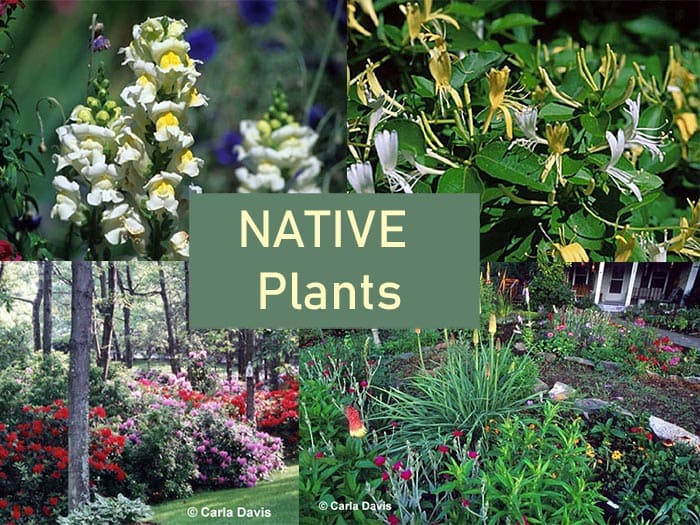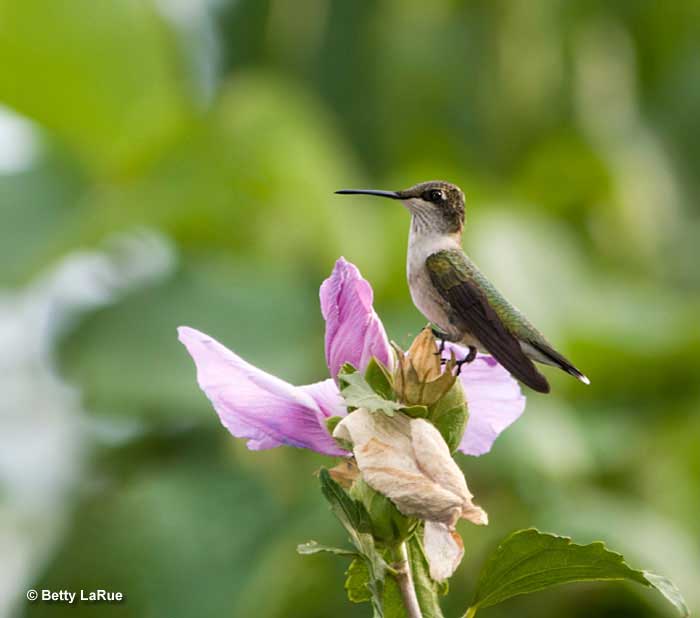
Alaska Plants for Wildlife Habitat & Conservation Landscaping
Do you enjoy observing nature…hearing the song of the chickadee…watching hummingbirds fill up on nectar from trumpet vines…listening to the chattering of squirrels…seeing the beauty and grace of a monarch butterfly perched on a milkweed?
If the answer is “yes”, you’ll probably want to landscape your property for wildlife so you can experience even more from Mother Nature by attracting more wildlife to your property.
Wildlife doesn’t just randomly appear in a given area. It is there because of favorable habitat. The essential elements that you must provide in your habitat are food, water, cover and a place to raise a family. To attract the most wildlife, you need native trees, shrubs, groundcover, vines and wildflowers, many of which will provide food and shelter.
Native or indigenous plants naturally occur in the region in which they evolved. They are adapted to local soil, rainfall and temperature conditions, and have developed natural defenses to many insects and diseases. Because of these traits, native plants will grow with minimal use of water, fertilizers and pesticides. Wildlife species evolve with plants; therefore, they use native plant communities as their habitat. Using native plants helps preserve the balance and beauty of natural ecosystems.
Remember the function served by plants and structures is more important than their appearance. In other words, don’t base your planting decisions solely on what a plant looks like.

There is only one commonly found type of hummingbird in Alaska which is the Rufous.
Following are WindStar Wildlife Institute’s plant recommendations for wildlife habitats in Alaska:
Trees
Tall–Alaska Cedar, Mountain Hemlock, Western Hemlock, Lodgepole Pine, Larch, Spruce, Cottonwood, Balsam Poplar
Shorter–Serviceberry, Quaking Aspen, Birch, Thinleaf Alder, Red Alder, Douglas Maple, Feltleaf Willow, Siberian Crabapple
Shrubs
Alder Blueberry, Bunchberry, Red-osier Dogwood, Ligonberry, Snowberry, Thimbleberry, Oregon Crabapple, Pacific Red Elder, Highbush Cranberry, Mountain Ash, Currant, Willow, Juniper
Flowers
Goldenrod, Aster, Dock, Buckwheat, Artemesia, Larkspur, Yarrow, Columbine, Fireweed, Lupine, Monkeyflower, Beach Pea, Speedwell
Groundcovers
Dwarf Dogwood, Cloudberry, Nagoonberry, Bearberry, Mountain Cranberry
Grasses
Bluegrass, Bluejoint Reed Grass, Bulrush, Cotton-grass, Hairgrass, Sedges, Wheatgrass
Aquatics
Duckweed, Spikerush,Pondweed, Wigeongrass, Water Milfoil, Cattail,Bulrush, Arrowgrass, Burreed, Pond Lily
Alaska has three times the coastline of the rest of the United States put together and is home to many of the tallest mountains, longest rivers, and largest lakes in the world. It has glaciers, forests, and parklands. The Alaska Native Plant Society can provide lists of plants for a specific region.
For more information on improving your wildlife habitat, visit the WindStar Wildlife Institute web site. On the web site, you can also apply to certify your property as a wildlife habitat, register for the “Certified Wildlife Habitat Naturalist e-Learning course, become a member and sign up for the FREE WindStar Wildlife Garden Weekly e-mail newsletter.

